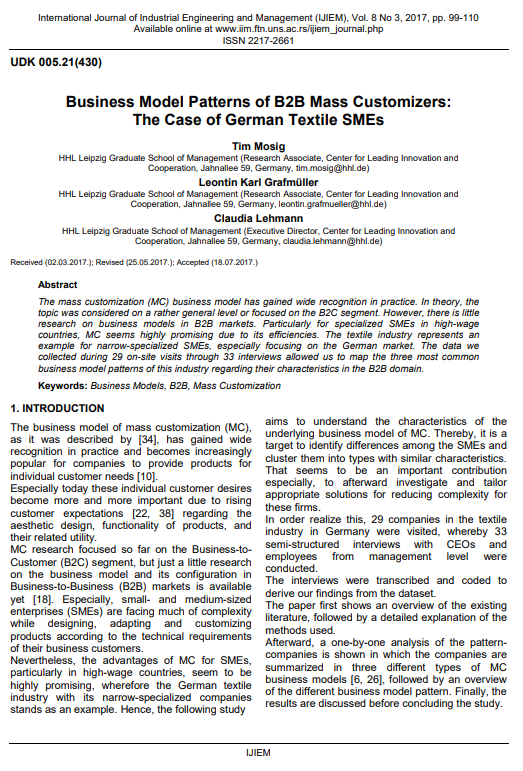Business Model Patterns of B2B Mass Customizers: The Case of German Textile SMEs

Published 2017-09-30
abstract views: 355 // FULL TEXT ARTICLE (PDF): 0
Keywords
- Business Models,
- B2B,
- Mass Customization
How to Cite
Copyright (c) 2023 International Journal of Industrial Engineering and Management

This work is licensed under a Creative Commons Attribution 4.0 International License.
Abstract
The mass customization (MC) business model has gained wide recognition in practice. In theory, the topic was considered on a rather general level or focused on the B2C segment. However, there is littleresearch on business models in B2B markets. Particularly for specialized SMEs in high-wage countries, MC seems highly promising due to its efficiencies. The textile industry represents an example for narrow-specialized SMEs, especially focusing on the German market. The data we collected during 29 on-site visits through 33 interviews allowed us to map the three most common business model patterns of this industry regarding their characteristics in the B2B domain.
Article history: Received (02.10.2017); Revised (26.10.2017); Accepted (09.11.2017)

